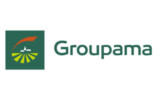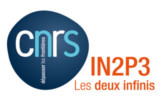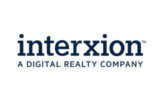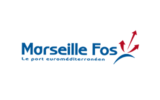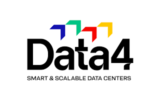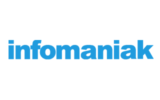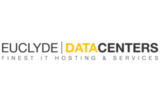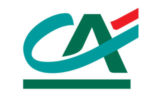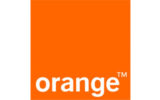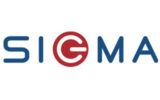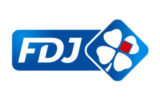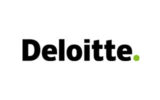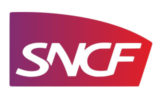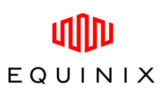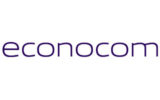DCIM: an effective, versatile tool for managing data centers
Originally designed for managing and operating IT equipment rooms and IT assets hosted at data centers, data center infrastructure management (DCIM) solutions now incorporate features focused on sustainability, as well as compliance with references, standards, and regulations (ISO 27001 and 50001, HDS, PCI-DSS, etc.).
What are the main features of a DCIM system and what benefits can be expected? How do you choose a DCIM solution? What is the cost of a DCIM tool and is it the right choice for all situations?
DCIM: centralized supervision of IT infrastructure and equipment rooms
Data center infrastructure management (DCIM) tools are used to monitor in real time the operations of all equipment in data centers and to manage the physical infrastructure of data centers.
In brief, a DCIM solution offers these main features:
- Supervision of IT infrastructure and equipment rooms: monitoring in real time of the critical physical components, such as servers, switches, power and cooling systems, network cables, uninterruptible power supplies, etc.
- Inventory and management of IT resources: a complete database of data center resources (racks, servers, applications, virtual machines, etc.), including their locations, capacities, usage, and status, facilitating asset management, capacity planning, and incident management.
- Monitoring of the electricity usage of equipment.
- Monitoring of temperature and humidity to prevent problems related to the cooling of IT equipment.
- Notifications in case of problems or deviations from predefined limits, enabling the teams in charge of data center operations to act quickly to make the necessary corrections.
- Data analysis and reporting: collection, processing, and analysis of data and detailed reports on resource usage, performance, electricity consumption, etc.
What’s the difference between a BMS and DCIM?
A building management system (BMS) can be used to manage all of the physical infrastructure of a data center: systems for cooling, electrical power, security, lighting, etc. It collects data on energy consumption, temperature, humidity, security, etc. Meanwhile, DCIM solutions, focus on the management of IT infrastructure and assets hosted at data centers.
DCIM, sustainable IT, and regulatory compliance
Originally, and this is obviously still the case, DCIM solutions were used to detect or even anticipate anomalies such as equipment failures, performance or capacity problems, network problems, and configuration errors.
Their main strength is identifying potential problems before they cause an outage. Operations teams are able to take preventive rather than corrective measures, which reduce the length of unplanned outages and the overall costs for keeping equipment in good working order.
Additionally, DCIM solutions monitor in real time a wide range of indicators, such as energy usage, the environment (temperature, humidity, etc.), the operating status of equipment, and the usage of data center resources, including power, bandwidth, and storage capacity. As the digital sector moves in a more sustainable direction, the information collected and analyzed by DCIM solutions is key to improving capacity planning, extending the lifespan of equipment (while reducing occasions where equipment is “blindly” replaced), and reducing the overall energy usage of data centers (by optimizing cooling and energy consumption).
What’s more, DCIM tools provide indicators that help organizations ensure their compliance with regulations in force in their industries (GDPR, HDS, PCI-DSS, etc.) and with voluntary standards such as ISO 27001 or 51001, EN 50600, and IEC 30164, as well as meet the needs of audits associated with these regulations and standards.
How to choose a DCIM solution
There are many different DCIM solutions available on the market, each with its own specific features, interoperability capabilities, ergonomics, and costs. Before launching into a benchmarking study of the solutions available on the market, it’s essential to first clearly define your needs, your constraints, and your objectives in a specifications document:
- Features: what are the essential, secondary, and additional features you expect (real-time monitoring, energy management, storage capacity management, etc.)?
- Pain points: what are the existing problems in the data center and what improvements are needed? How many incidents do you have to manage each year and how much time do you spend fixing them?
- Scalability: what future upgrades do you plan to make to your data center? What features will be needed in the future?
- Interoperability: do you have a comprehensive assessment of the data center allowing you to ensure the compatibility of the DCIM solution with all of the data center’s technical components?
- Keeping it running smoothly: who will be in charge of operating and maintaining the solution?
- Resources for operating the solution: do you already have the resources for creating, updating, and removing equipment to accurately reflect the reality of your IT equipment rooms?
- Budget: how much are you willing to invest to acquire a DCIM tool and to configure it to the specific parameters of your data center?
- Long-term prospects of the publisher and/or developer: to guarantee updates to the DCIM solution over time.
What benefits can you expect to gain from a DCIM solution?
There are many benefits to implementing a DCIM solution, including:
- More effective operations of IT equipment rooms, and even of the entire data center,
- Better responsiveness when an incident occurs and reduced maintenance time,
- Greater reliability and better management and governance of data,
- Time saved on the technical management of IT equipment rooms,
- Proactive management of equipment, which helps reduce the number of incidents,
- Anticipation and automation of work requests,
- Simplified communication of technical data, with partial or total access according to the user profile,
- More detailed management of resources (climate control, m², electricity, availability of space in racks, etc.), which helps improve data center performance.
However, DCIM is not a universal solution: depending on your needs, your budget, the resources you have available, and the technical skills of your employees, other solutions may be more appropriate.
What are the top DCIM solutions and how much do they cost?
Some of the commercially available DCIM systems include: Schneider Electric StruxureWare DCIM, Nlyte DCIM, Circonus DCIM, Sunbird/Raritan DCIM, and Néphélé Data Control DAMS. Among open-source solutions, openDCIM has a large community of users and offers total customization. However, while an open-source solution may eliminate the cost of purchasing licenses, it may suffer from deficiencies in terms of features and support.
Regarding the cost of DCIM solutions, it’s not always easy to compare options as each software publisher may price its solution using different units. For example, the overall cost may be determined by a price per m² of equipment rooms, by a price per rack, or a price per connection, and these differences may significantly impact the total cost of the solution.
It’s worth noting that the incorporation of dynamic information, such as measurements of kilowatts from connected power distribution units (PDUs), increases the precision of monitoring, and thus increases costs. However, it can also allow you to make significant energy savings and improve predictive maintenance.
The balance of costs, potential savings, and image, particularly relating to your IT sustainability, can be a major factor when choosing a DCIM system.
By Soha Youssef, Project Engineer, and Cyril Le Vient, IT Projects Team Lead, APL Data Center.



